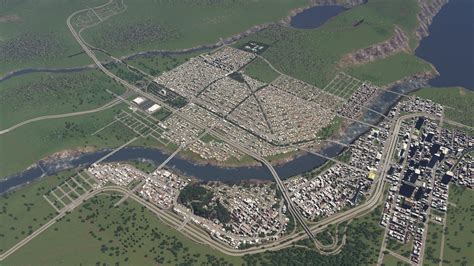The recent decision by the developers of ‘Cities: Skylines 2’ to remove landlords from the game due to escalating rent prices has thrown open a Pandora’s box of discussions both in the gaming community and beyond. The move underscores the intricate dance between supply and demand in virtual environments, and how simulations often inadvertently reflect real-world dilemmas. In ‘Cities: Skylines 2,’ high rents were a pain point, prompting this bold change aimed at balancing gameplay and alleviating player frustrations. This case study serves as a fascinating lens to examine how digital frameworks can offer insights into complex economic theories and urban planning principles.
Why was the removal of landlords deemed necessary in this game? It’s a question that strikes at the heart of both gaming mechanics and social commentary. As one might expect, the high rent scenario stemmed from an imbalance in the housing supply—a familiar story to anyone following urban development trends. Historically, simulations like this one have grappled with mirroring the grim realities of our housing markets, where demand far outstrips the supply of affordable homes. In ‘Cities: Skylines 2,’ players frequently found themselves grappling with angry citizens unable to meet their rental obligations, echoing real-world crises where rent hikes lead to displacement and social unrest.
The parallels to real-life housing discussions are hard to ignore. In both virtual and real landscapes, the topic of land value tax often emerges as a potential solution to curtail runaway speculation and housing shortages. A land value tax (LVT) targets the productive use of land, disincentivizing owners from holding onto empty plots purely for future profit. Essentially, it aims to break the cycle where land becomes a speculative investment rather than a means to provide housing. The virtual landlord conundrum in ‘Cities: Skylines 2’ captures this tension beautifully, providing a digital sandbox for exploring policy impacts without the real-world consequences.
Commenters on the article highlighted another interesting wrinkle: the relationship between game mechanics and societal values. Some pointed out that in other virtual worlds like ‘Second Life’ or ‘EVE Online,’ property speculation remains a persistent challenge. These environments reflect our economic behaviors and biases, providing a microcosm of larger societal issues. Interestingly, the solution in some games leans towards implementing rules that mirror real-world governance, such as lotteries and zoning laws seen in ‘Final Fantasy XIV,’ or going even further with undeveloped land taxes to push against speculative behaviors.
At the crux of these discussions is a fundamental question: can a game like ‘Cities: Skylines 2,’ which inherently relies on creating lifelike economic simulations, offer viable solutions for real-world problems? Gaming, after all, is becoming increasingly sophisticated in its ability to model economic, social, and environmental systems. The insights gleaned from how players interact with these systems, and how developers tweak them in response, can sometimes offer surprisingly clear-eyed perspectives on policy debates. For example, as some commenters suggested, adding more public housing or implementing rent controls might balance the scales in both digital and physical worlds, alleviating the negative impacts of predatory rent-seeking. As this conversation evolves, it will be fascinating to see how game design continues to serve as a proxy for testing out real-world urban strategies.


Leave a Reply